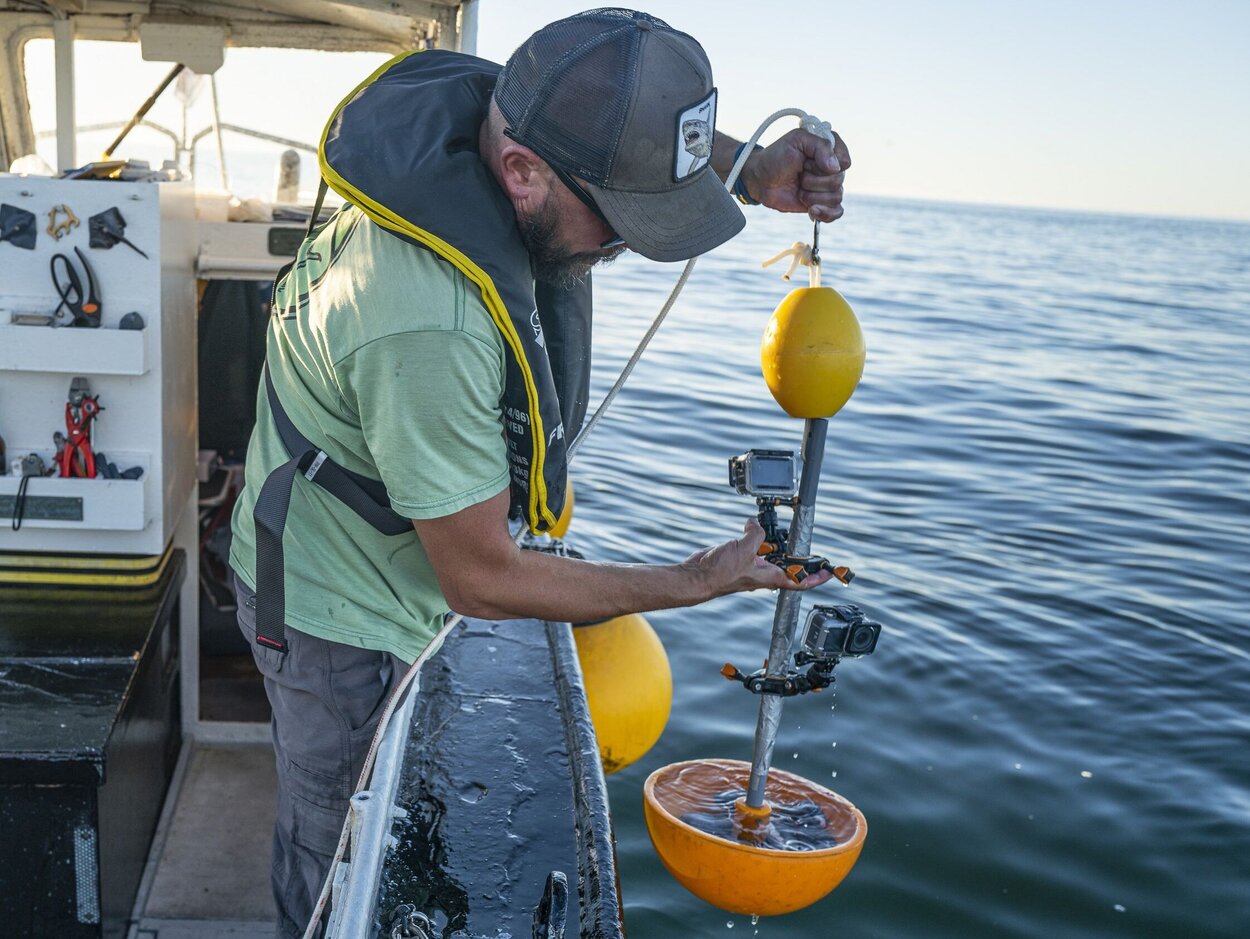As part of the project, which has been running since 2017, adult tope are caught and tagged with satellite transmitters in the German Bight around Helgoland every year in late summer. The aim of the research is to complete the puzzle of the migrations of this endangered shark species. Adult tope gather in the waters around Helgoland during the summer months and leave the area in autumn. Some specimens migrate thousands of kilometres out into the open Atlantic and towards some of the Atlantic islands.
Two of the many questions to be answered by this project are whether the migrations show specific patterns that indicate other important areas where the sharks spend time, and whether there may be a regular return of individuals to the German Bight. Knowledge of such patterns and areas is crucial for improved conservation measures.
You can find more information about the "Helgoland Tope Tagging Project" here.

![[Translate to English:] [Translate to English:]](/media/_processed_/7/1/csm_IMG_7977_large_1defaf5de1.jpg)







